The Most Common Retirement Planning Mistakes
Whether with respect to your career, a business initiative, or even relationship advice, gleaning insight from those with experience can prove invaluable. The same holds true for retirement planning, especially when you consider that (according to the Lincoln Financial Group) more than 60% of retirees said they’d go back and do things differently when planning their retirement.
In this post, we’ll examine the biggest mistakes retirees often make and how to avoid them.
Not preparing for a forced retirement
In recently surveying 3,600 retirees between the ages of 62 and 75, the Employee Benefits Research Institute (EBRI) found 58% of respondents were forced into early retirement mostly due to a health problem or disability (38%)—though 23% reported changes or restructuring at their company.
So, what can you do to better prepare for an unexpected early retirement? Here are three health insurance-related tips to make the transition into a forced retirement a little easier:
Capitalize on health savings accounts (HSAs)
You can use a health savings account to pay for qualified out-of-pocket healthcare expenses including deductibles and copays, with HSAs offering several benefits such as no need to spend your balance every year; money can accumulate in the account indefinitely until used.
Consider long-term disability (LTD) insurance
LTD insurance is designed to replace a portion—often 60% or more—of the income you’d lose due to an injury or illness that keeps you out of work for a year or more. Coverage typically extends to severe anxiety or depression, pregnancy complications, heart disease, chronic back pain, nerve damage, and more. While policies are often expensive—typically ranging from 1 to 3% of your annual salary, per Policygenius.com—it’s prudent to consider long-term disability insurance when you’re healthy since policies don’t cover preexisting conditions.
Evaluate long-term care options
Long-term care policies cover out-of-pocket expenses associated with home care, assisted living, and nursing homes, benefits not covered by Medicare and other public programs. By planning early, you can take control of your future healthcare needs—which is important, as the U.S. Department of Health and Human Services reports an almost-70% chance someone turning 65 today will need some form of long-term care (LTC) services in his or her remaining years.
While everyone’s situation is different—especially if you have a family history of illness at a young age—experts recommend you obtain a policy in your mid-to-late fifties so you can lock in a lower premium.
While alternatives to stand-alone LTC policies do exist—including self-funding and adding a rider to life insurance—a financial advisor can help you evaluate your options and then make recommendations based on your own unique situation.
Overinflating the value of your home
It’s not uncommon for homeowners to reap less than initially anticipated when downsizing during retirement, so be sure to align your expectations with reality—especially if you’re depending on the proceeds to fund a good chunk of your retirement.
Start by properly assessing the value of your home with the help of a realtor or professional appraiser and then understand all costs associated with the sale including realtor fees, capital gains taxes, and any fixes required to close.
Collecting Social Security too early
The age at which you decide to collect Social Security will determine your monthly benefit amount; choosing to receive benefits before you reach full retirement age (FRA), currently 67 for those born in or after 1960, will slash your monthly benefit per a permanent reduction. More specifically, Social Security benefits increase by approximately 7% each year between age 62 and your FRA and then approximately 8% each year between your FRA and age 70.
To illustrate, let’s assume the full amount of your Social Security benefit—what you’d receive if you wait until your full retirement age—is $1,783 a month (the average benefit in 2024). If you claim benefits at age 62 instead, your benefit will decrease by approximately 30% to $1,248: meaning you’d miss out on $6,420 a year! Multiply that by five years (when you’d reach full retirement age), and that’s approximately $32,100 per spouse if you’re married and your spouse’s benefit is similar.
Carrying too much risk in your investment portfolio
As you get older, adopting a more conservative investment strategy is generally advisable with the percentage of equity holdings (stocks) invested in your retirement accounts ideally decreasing over time. The aim is to reduce risk, which becomes increasingly important as you may not have the luxury of awaiting a market bounce-back following a downturn.
As a helpful guideline to determine the percentage of your investment portfolio to keep in stocks, subtract your age from 100 to know your ideal stock allocation. The remaining portion of your portfolio should be invested in "safe" assets such as bonds and certificates of deposit (CDs).
Keep in mind, however, that longer lifespans have caused some experts to modify this rule and recommend replacing 100 with 110 (or more!) to avoid running low on funds.
Despite this widely available knowledge, a recent Fidelity report claims investors—specifically 37.6% of baby boomers—are exposing their retirement accounts to unnecessary risk via too much investment in stock.
Not understanding Medicare & supplemental plans
Medicare covers over 65 million Americans, making it the most common insurance option for retirees. While it’s difficult to argue against the importance of Medicare in retirement planning, many people assume they have a good understanding of this program and how it works; yet, a recent Harris Poll survey revealed more than 70% of participants over 50 wish they had a better grasp of this coverage!
Though Medicare details can be quite complicated and, frankly, overwhelming at times, you can easily avoid some common (and costly) mistakes with minimal effort. For example, if you sign up for Medicare during the initial enrollment period, Medigap policies can't deny you coverage or charge you higher rates for any preexisting conditions. Also remember your income level impacts Medicare Part B premiums and any potential surcharges.
Visit our online library of articles to learn more about various Medicare topics and broaden your understanding.
Utilizing an inefficient withdrawal strategy
As how you withdraw money from your retirement accounts can significantly impact taxes owed, you’ll want to implement the most effective withdrawal strategy possible to maximize your income and minimize your tax liability.
A traditional approach involves first taking withdrawals from taxable accounts (e.g., brokerage accounts), then tax-deferred accounts such as traditional IRAs and 401(k) accounts, and finally Roth or health savings accounts (HSAs) whereby withdrawals are tax-free: with a goal of giving tax-deferred accounts the opportunity to grow over more time.
Alternatively, your circumstances may find it more advantageous to employ a proportional withdrawal approach in which you withdraw from different types of accounts each year in proportion to their balances—aiming to reduce your tax impact and extend the life of your investment portfolio.
Remember that a one-size-fits-all approach doesn’t exist; the best option for you will depend on various factors and may involve multiple strategies in fact.
Overlooking estate planning
A solid estate plan allows you to manage and distribute your assets according to your wishes should you pass away or become mentally incapacitated. According to a recent Caring.com estimate, however, 44% of adults aged 55 and older don’t have any estate planning documents. Even among those who do, many fail to update their beneficiaries and wills on a regular basis.
Did you know the beneficiaries listed on your retirement accounts or insurance policies generally supersede those in your will? In other words, regardless of what your will states, those assets will be inherited by the beneficiaries named on those accounts unless you’ve listed your estate as the primary beneficiary. It’s for this very reason (and more!) that estate planning is so important.
In sum: what you need to know about common retirement mistakes
With so many factors to consider, planning for retirement is often complicated and overwhelming just as this post expresses. The good news, however, is that there’s no need to go it alone; a qualified financial advisor can help guide you through the retirement-planning process so you can enjoy your golden years in the absence of any financial regrets.
Questions about planning your retirement? Schedule a FREE discovery call with one of our CFP® professionals.
About the author
The content in this post was developed by our team of writers and reviewed by our team of CFP® professionals here at Vision Retirement.
Retirement Planning | Advice | Investment Management
———
Vision Retirement is an independent registered advisor (RIA) firm headquartered in Ridgewood, New Jersey. Launched in 2006 to better help people prepare for retirement and feel more confident in their decision-making, our firm’s mission is to provide clients with clarity and guidance so they can enjoy a comfortable and stress-free retirement. To schedule a no-obligation consultation with one of our financial advisors, please click here.
Disclosures:
This document is a summary only and is not intended to provide specific advice or recommendations for any individual or business. All examples are hypothetical and are not representative of any specific situation. Your results will vary. The hypothetical rates of return used do not reflect the deduction of fees and charges inherent to investing.





